Contents
Pepper is a heat-loving nightshade crop. In our country, it is grown everywhere, in the southern regions – in open ground, in the north – in closed polycarbonate greenhouses. Pepper is in high demand not only because of its excellent taste, but also due to the high content of vitamins, trace elements and other useful substances. Suffice it to say that it contains more vitamin C than lemon, and vitamin A – no less than carrots. In addition, pepper can be called a dietary product – 100 g of a vegetable contains only 25 kcal.
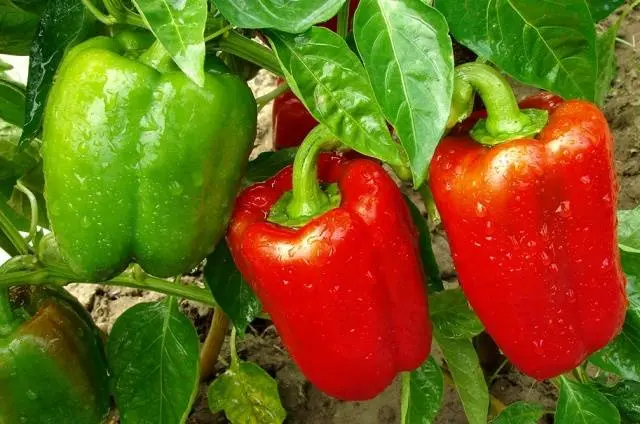
Although this crop is quite demanding on growing conditions, if desired, you can reap a good harvest even in regions with a cool climate. True, for this you need to comply with agricultural technology, fertilizing schedules, and fight pests in time. Top dressing of peppers in the greenhouse is not very different from its fertilizers in the open field, but has its own characteristics.
Pepper requirements for growing conditions
Creating suitable conditions for pepper is half the battle for a high yield. What does he need for successful vegetation?

- The soil should be light, fertile, with a slightly acidic, close to neutral reaction.
- Light day for pepper should be no more than 8 hours. It requires warm soil with a temperature of 18-24 degrees and well-warmed air – 22-28 degrees. If it drops to 15, the pepper will stop growing and wait for more favorable weather.
- It is advisable to water the pepper often, but little by little. If possible, install drip irrigation. Water for irrigation needs warm, about 24 degrees, but not lower than 20.
- Top dressing should be regular, with a high content of potassium.
It is equally important to know what conditions are known to lead to failure when growing peppers:
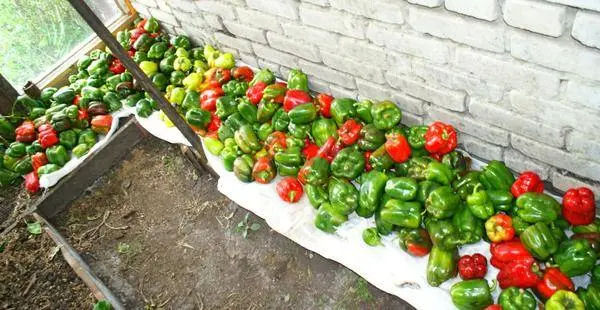
- Dense soil is contraindicated for this culture – its roots do not like damage, they recover for a long time, it is advisable to mulch the ground and not loosen it. In order for the pepper root system to receive the amount of oxygen necessary for life, the soil must be water and breathable.
- When planting seedlings, you can not bury it or transplant it from place to place.
- Temperatures above 35 degrees, differences between day and night temperatures of more than 15 degrees also do not contribute to the normal development of pepper.
- Acidic soil, fresh manure, high doses of mineral, especially nitrogen fertilizers are guaranteed not to let you get a good harvest.
- Long daylight hours depress pepper, and direct sunlight can cause fruit burns.

Cushioned landings are a complex issue. In the open field, they make sense, since the bushes mutually shade each other and protect the pepper from sunburn, but contribute to the development of diseases – it is important to maintain the correct distance here.
Features of growing pepper in greenhouses
Of course, the most delicious pepper grows outdoors, under real sun, and not under artificial lighting. But our cool climate limits the choice of varieties that can bear fruit outdoors.
Variety choice
We grow Bulgarian sweet peppers and Dutch hybrids. Bulgarian pepper is quite edible at the stage of technical ripeness, it is able to ripen and turn into its inherent color while in storage. Dutch hybrids do not ripen well, at the stage of technical ripeness they have a bad taste and it is impossible to remove them before the first smears of varietal color appear.
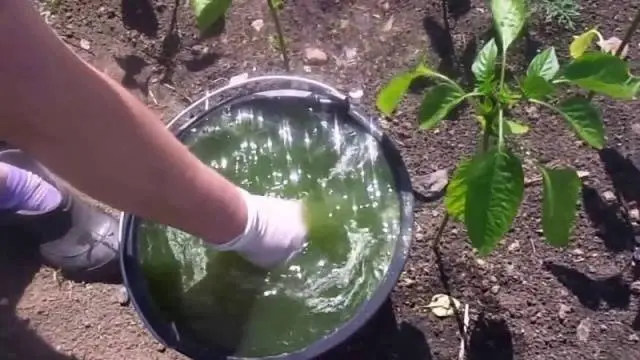
In order for the pepper to reach technical maturity, it needs 75-165 days from emergence, and biological ripeness occurs in 95-195 days. Naturally, outside the greenhouse in the northwest, only early-ripening thin-walled varieties of Bulgarian selection and only a few Dutch hybrids specially bred for these conditions can ripen.
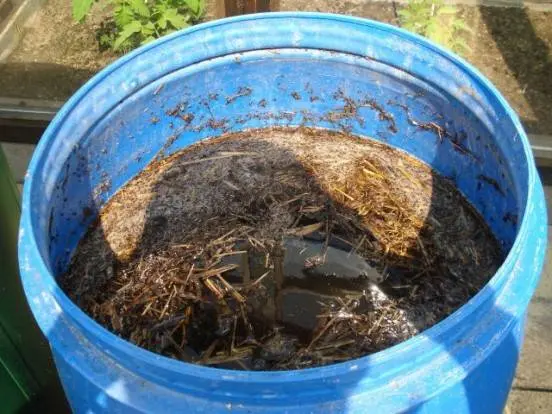
Polycarbonate greenhouses with artificial lighting, irrigation, heating allow you to significantly expand the list of cultivated varieties and get a crop of even late hybrids, which are especially large in size and thick walls. The main thing is that these varieties and hybrids are suitable for indoor cultivation.
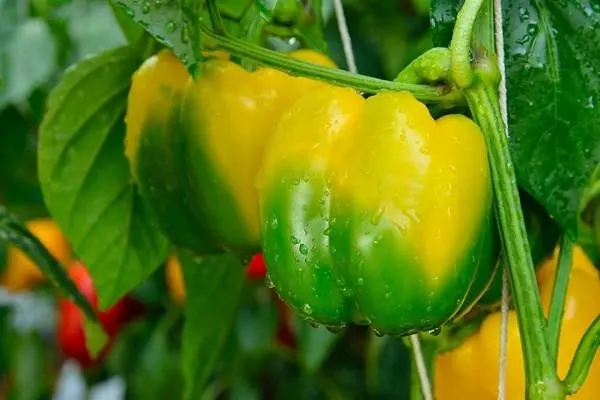
Benefits of growing peppers in greenhouses
In the northwest, when planting seedlings in a greenhouse, you no longer have to worry about temperature fluctuations or daylight hours – all the conditions necessary for pepper can be artificially created if necessary. Here it is easier to fight pests or create the necessary humidity.
Feeding peppers in a polycarbonate greenhouse is not too different from fertilizing this crop in the open field, if you are used to following the requirements of agricultural technology. A plant needs the same nutrients in certain phases of development, regardless of where it grows. You need to make a feeding schedule and strictly follow it.
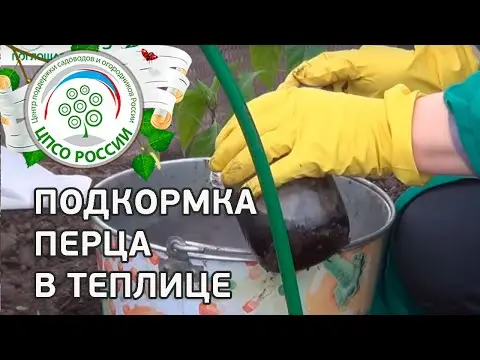
In polycarbonate greenhouses, pepper starts to yield earlier and ends later, it makes sense to grow tall varieties with long fruiting periods. The harvest that can be harvested from one square meter in open ground is much less than that obtained in greenhouse cultivation, where 10-18 kg of fruit is often harvested from a bush, depending on the variety.
The Nutrients Needed by Peppers
Like all plant organisms, pepper needs nitrogen, phosphorus, potassium and trace elements. He needs the largest doses of nitrogen during the active growth of green mass, then, during flowering and fruiting, his introduction is somewhat reduced.
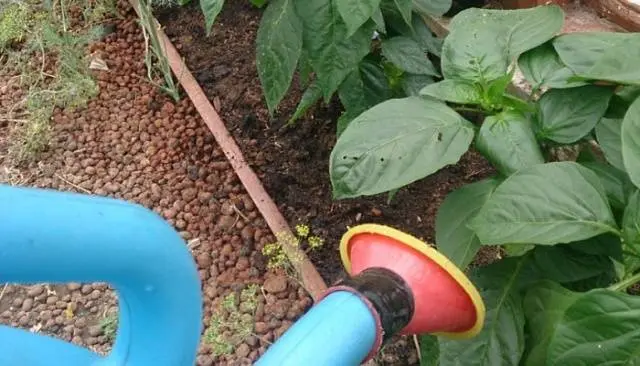
Phosphorus and potassium are necessary for flowering and fruiting in pepper, they are consumed by the plant throughout the growing season. But this vegetable needs a little phosphorus, and it consumes potassium in fairly large doses, and it prefers compounds that do not contain chlorine.
Of the trace elements, pepper especially needs magnesium and calcium, they are given throughout the entire growing season. Trace elements are poorly absorbed when applied under the root. Best of all, pepper perceives them with foliar top dressing.
Organic matter is useful to the plant throughout the season, but it is better to give it in small doses. You just need to remember that pepper does not take fresh manure well and you need to give it in the form of infusions.
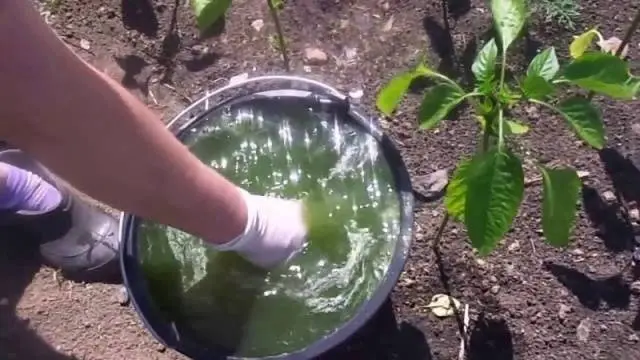
Top dressing of pepper in closed ground
Top dressing is applied during soil preparation, during the growing season under the root and along the leaf by spraying.
Soil Preparation
In polycarbonate greenhouses, top dressing of the soil should be started in the fall – for each square meter, at least 0,5 buckets of compost are brought in for digging, and before planting seedlings on the same area:
- potassium sulfate or other potassium fertilizer that does not contain chlorine – 1 teaspoon;
- superphosphate – 1 tbsp. spoon;
- ash – 1 glass;
- well-rotted humus – 0,5 buckets.
It is even better to replace the fertilizers from the above list with a mineral complex designed specifically for growing peppers, making it according to the instructions. After that, you should dig the bed shallowly, spill it with warm water and cover with a film that needs to be removed only before planting seedlings.
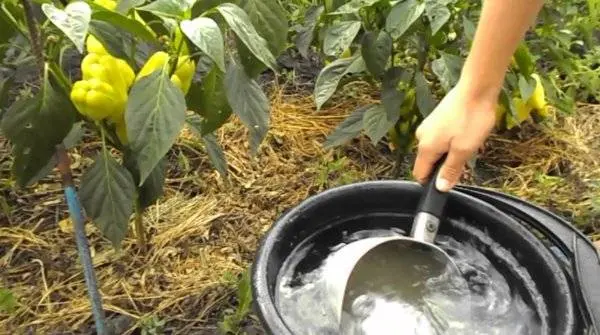
Root feeding
It is best to feed peppers with organic fertilizers – this will make it possible to obtain environmentally friendly products.
Organic Fertilizers
If you have the opportunity, dilute a bucket of mullein with 3-4 buckets of warm water and let it brew for a week. In the same way, you can prepare an infusion of bird droppings or green manure.
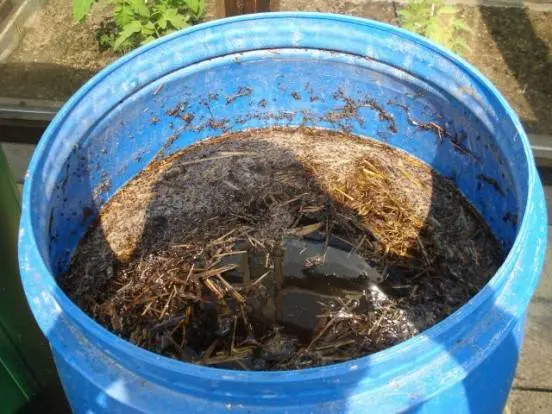
Further, when feeding pepper, the prepared infusions are diluted as follows:
- mullein – 1:10;
- bird droppings – 1:20;
- green manure – 1:5;
add a glass of ash to a bucket of solution, stir well and pour under the root.
The first top dressing is given about two weeks after planting seedlings in the greenhouse, when new leaves appear, spending 0,5 liters per bush. Further, the pepper is fertilized every 2 weeks, increasing the volume of fertilizer to 1-2 liters.
Mineral Fertilizers
If it is not possible to use organic matter, you can dissolve special fertilizers for peppers and tomatoes with water according to the instructions. Take a bucket of water:
- 40 g superphosphate;
- 30 g of potassium sulfate;
- 20 g of ammonium nitrate.
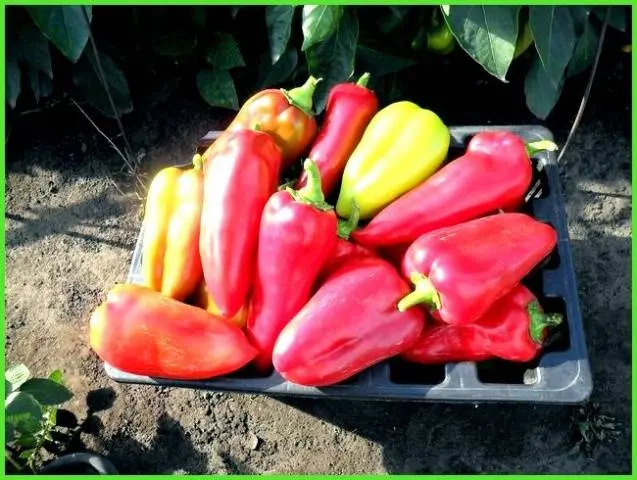
During the growing season, pepper is fed with mineral fertilizers 3-4 times.
- First feed. Two weeks after planting the seedlings, 0,5 liters of fertilizer are applied under each bush.
- Second feed. At the time of mass fruit setting – 1-2 liters under the root, depending on the size of the bush.
- Third feed. Simultaneously with the beginning of the collection of fruits – 2 liters of fertilizer under the root.
If there is a need or the fruiting period is delayed, it is advisable to give a fourth top dressing.
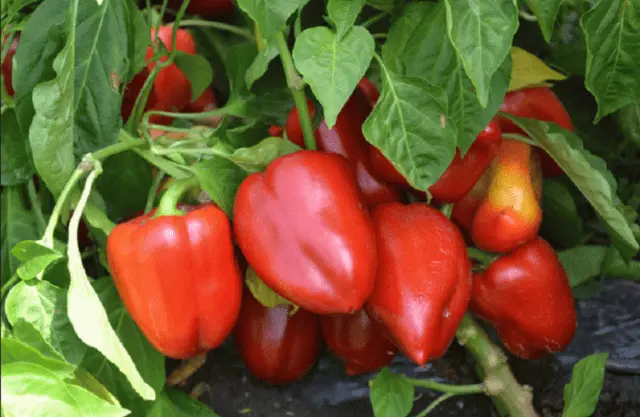
Foliar top dressing
Trace elements are not vital nutritional components for pepper grown as an annual plant, their deficiency simply does not have time to become critical in one season. But the health of the plant, the duration of fruiting and the taste of the fruit depend on them.
Trace elements are poorly absorbed when fertilizing the soil, they are given with foliar top dressing. It is best to buy a chelate complex and apply it according to the instructions.
Foliar top dressing is also called quick fertilizer, if you notice a lack of some kind of nutrient and you need to urgently correct the situation, spraying will help. In the greenhouse, foliar top dressing can be done every 2 weeks, combining them, if necessary, with preventive treatments for pests and diseases. It is useful to add an ampoule of epin, zircon or other natural stimulant to the working solution.
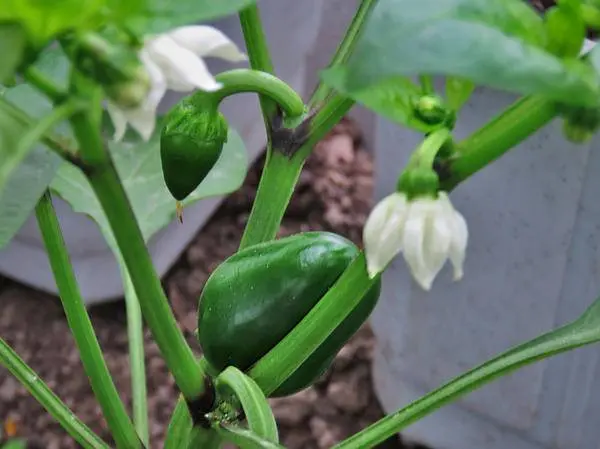
If you grow environmentally friendly products, you can use an ash extract as a foliar top dressing, in which, in addition to phosphorus and potassium, all trace elements are present. Pour a glass of powder with 2 liters of boiling water, let stand overnight, then add up to 10 liters, strain and spray.
Conclusion
Pepper fertilizer in a polycarbonate greenhouse is not too different from top dressing in the open field, it’s just that with the right organization of the workflow, everything can be done faster here, and the effect can be better. Have a good harvest!









